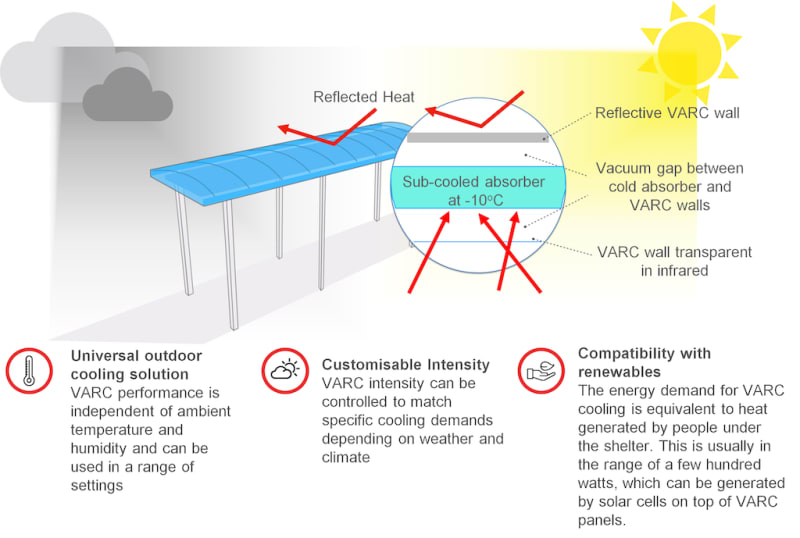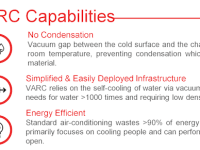Air-conditioning systems spend most (up to 90%) effort on cooling air. Cooling people is just a byproduct of the whole process. To reduce energy demand we need to implement approaches that reverse this situation and focus on directly cooling people with minimum conditioning of surrounding air.
Based on the ASHRAE Standards, thermal comfort is defined based on an average between air temperature and Median Radiant Temperature (MRT) of surrounding surfaces. Hence, lowering the MRT enables us to achieve thermal comfort without intensive use of air-conditioning.
Standard radiant cooling enables lower MRT through cold panels attached or embedded to ceilings, floors and/or walls. Cool water is continuously pumped through a network of pipes bonded to the panels to keep them cold. Indoors such approach has proven to lower energy demand by up to 30% as compared to conventional air-conditioning systems. However, cold panels are costly to install and maintain. The exposed design of the panels means that their temperature has to be kept above dew point to avoid condensation, which limits the ultimate heat removal capacity. In general, panels tend to spend more than 50% of their capacity on cooling surrounding air.
Vacuum Assisted Radiant Cooling (VARC) is a form of radiant cooling that focuses on cooling people directly instead of first conditioning the environment around them. It relies on patented vacuum chambers with thin walls (below 100 microns thick) that are transparent to infrared. The ideal insulating properties of vacuum allows even sub-zero radiant surfaces, which boosts radiant heat transfer for more effective cooling. It is able to perform independently of surrounding air temperature and humidity making it suitable for efficient outdoor cooling and indoor cooling with natural ventilation.
One practical application can be outdoor shelters, walkways and awnings. They are primarily designed to shield pedestrians from sunlight and rain. On hot days, these shelters provide shade and prevent heat gain from sunlight. However, they are unable to help pedestrians cool down by losing heat to the environment. Shelters constructed with VARC panels will be able to provide standard shielding from sun and rain with added advantage of a cooling effect similar to that of an air-conditioned room (depending on geometry and VARC temperature).
Like this entry?
-
About the Entrant
- Name:Dmitry Isakov
- Type of entry:individual
- Patent status:patented





